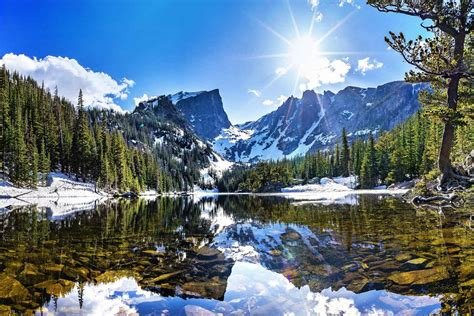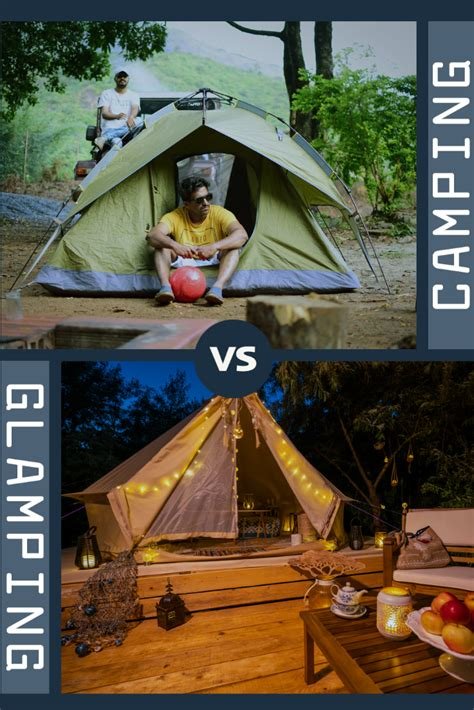10 Most Beautiful Winter Hikes for Nature Lovers
Are you a nature lover looking for some outdoor adventure this winter? If so, you’re in luck! In this blog post, we’ll be exploring the 10 most beautiful winter hikes that are perfect for nature enthusiasts like you. From stunning hiking destinations to lesser-known trails and breathtaking views of the Northern Lights, there’s something here for everyone. We’ll also be sharing essential tips for safe winter hiking, as well as the gear you’ll need to stay warm and comfortable on the trails. And if you’re a wildlife enthusiast, we’ve got you covered too! Let’s get ready to crunch through the snow and discover the hidden gems and snow-covered wonders that await us on these winter hikes. So, lace up your hiking boots, grab your gear, and get ready to experience the magic of winter in the great outdoors!
Exploring Winter Wonderland: Stunning Hiking Destinations
Winter is a magical time for hiking, with snow-covered landscapes creating a stunning, serene backdrop for outdoor adventures. From towering peaks to tranquil forests, the winter wonderland offers a diverse range of hiking destinations that are guaranteed to take your breath away.
One of the most stunning hiking destinations for winter exploration is the Rocky Mountain National Park in Colorado. With its snow-capped mountains and frozen lakes, the park offers a true winter wonderland experience. The trails here cater to all levels of hikers, from easy strolls to challenging treks, making it an ideal destination for outdoor enthusiasts of all skill levels.
For those who crave a more remote and rugged experience, Denali National Park in Alaska is a must-visit destination. Here, hikers can immerse themselves in the pristine beauty of the Alaskan wilderness, surrounded by towering peaks and vast expanses of untouched snow. The park is home to an array of wildlife, and lucky hikers may even catch a glimpse of the elusive northern lights dancing across the night sky.
No winter hiking experience would be complete without a visit to the stunningly scenic Yellowstone National Park. The park’s geothermal features, snow-covered landscapes, and diverse wildlife make it a captivating destination for hikers. Winter offers a unique opportunity to explore the park’s quieter side, with tranquil trails and the chance to spot wildlife in their natural habitat.
Crunching Through Snow: Tips for Safe Winter Hiking
Winter hiking can be a magical experience, with the serene landscapes and the peaceful sound of snow crunching beneath your feet. However, it also comes with its own set of challenges and risks. It’s important to be well-prepared and mindful of safety while venturing out into the winter wonderland.
Layering is key when it comes to winter hiking. Make sure to dress in moisture-wicking and insulating layers to keep yourself warm and dry throughout the hike. A base layer, an insulating layer, and a waterproof shell are essential to protect yourself from the cold and potential moisture from the snow.
Prioritize footwear that offers good traction and ankle support. Invest in a pair of waterproof and insulated hiking boots to keep your feet dry and warm. Additionally, consider using traction devices, such as crampons or microspikes, to prevent slipping on icy or snowy terrain.
Another crucial aspect of winter hiking is hydration and nutrition. It’s easy to overlook the need to drink water in cold weather, but staying hydrated is just as important in the winter as it is in the summer. Pack plenty of water and high-energy snacks to fuel your body throughout the hike.
Trail Preparation: Essential Gear for Winter Hikes
When preparing for a winter hike, it is crucial to have the essential gear to ensure a safe and enjoyable experience. One of the most important items to have is proper footwear, such as insulated and waterproof boots with good traction to prevent slipping on icy surfaces. It is also essential to dress in layers, including a moisture-wicking base layer, insulating mid layer, and a waterproof and windproof outer layer to stay warm and dry in cold and snowy conditions.
Another vital piece of gear for winter hikes is a well-stocked first aid kit, which should include items such as bandages, antiseptic wipes, and pain relievers in case of any injuries on the trail. Additionally, carrying a map, compass, and GPS device can help hikers navigate through snowy terrain and prevent getting lost. A headlamp or flashlight is also necessary, as the days are shorter in winter, and it gets darker earlier, especially in mountainous areas with dense tree cover.
Bringing along hydration and nutrition is essential for staying energized and hydrated during a winter hike. Insulated water bottles or hydration packs can prevent water from freezing, and high-energy snacks like nuts, dried fruits, and energy bars can provide a quick boost of energy. It is also important to bring along extra food and water in case the hike takes longer than expected due to difficult terrain or changing weather conditions.
Lastly, a few more essential items for winter hikes include hand and toe warmers to keep extremities warm, a multi-tool or knife for emergency repairs, and a fully charged cellphone for safety. By having the right gear, hikers can have a comfortable and safe adventure in the winter wilderness.
Chasing the Northern Lights: Hikes with Breathtaking Views
When it comes to experiencing the magic of the Northern Lights, there are few things more awe-inspiring than witnessing this natural phenomenon from a breathtaking hiking trail. The combination of the dancing lights in the sky and the stunning natural landscapes creates an unforgettable experience that draws adventurers from around the world.
One of the most coveted destinations for chasing the Northern Lights is Norway’s Lofoten Islands. The rugged terrain and coastal vistas provide the perfect backdrop for the shimmering auroras. Hiking along the trails of Lofoten offers unparalleled opportunities to witness the Northern Lights in all their glory, surrounded by the beauty of the Norwegian wilderness.
Another prime location for experiencing the Northern Lights while hiking is Iceland. The island’s diverse landscapes, including volcanic fields, glaciers, and waterfalls, make for an enchanting setting to view the auroras. Hiking through Iceland’s remote and pristine wilderness presents the chance to encounter the Northern Lights in some of the most picturesque settings on earth.
For those seeking a truly unique experience, the remote wilderness of Alaska provides an unforgettable backdrop for chasing the Northern Lights. Hiking through the Alaskan wilderness offers the chance to witness the auroras from rugged mountain trails, vast tundra, and quiet forests, providing an immersive and unforgettable encounter with this natural wonder.
Hidden Gems: Lesser-Known Winter Hiking Trails to Discover
Winter hiking is a magical experience, but it can be even more exhilarating when you venture off the beaten path and discover lesser-known trails that offer stunning views and unique landscapes. If you’re looking to explore hidden gems and escape the crowds, consider checking out these lesser-known winter hiking trails that are sure to leave you in awe.
One of the hidden gems of winter hiking is the Mirror Lake Trail in Oregon. This trail offers a moderate hike with breathtaking views of the snow-covered peaks of the Cascade Mountains. The serene reflection of the mountains on the frozen Mirror Lake is truly a sight to behold, making this lesser-known trail a must-visit for winter hikers.
Another incredible hidden gem is the Warren Lake Trail in Colorado. This trail winds through a peaceful alpine forest and leads to the pristine Warren Lake, surrounded by towering peaks and stunning rock formations. The quiet beauty of this trail makes it a perfect escape for hikers seeking a tranquil and secluded winter adventure.
If you’re in search of a hidden gem with a touch of mystery, consider exploring the Murphy Dome Trail in Alaska. This lesser-known trail offers a chance to witness the awe-inspiring natural phenomenon of the Northern Lights, as well as panoramic views of the snow-covered landscape stretching as far as the eye can see. Hiking this trail in the winter is a truly unforgettable experience.
Snow-Covered Wonders: Hikes to Spot Wildlife in Winter
Winter is a magical time to explore the great outdoors and witness the beauty of wildlife in their snow-covered habitat. As the landscape is blanketed in a layer of pristine white, the chance to spot animals in their natural element becomes even more captivating.
When embarking on winter hikes to observe wildlife, it’s essential to be mindful of the animals’ natural behaviors and habits. While the serene setting may seem peaceful, it’s important to remember that many creatures are adapting to survive in this harsh environment. Finding the perfect spot to quietly observe the wildlife from a safe distance allows you to truly appreciate the wonder of nature unfolding before your eyes.
One of the best ways to increase your chances of spotting wildlife during a winter hike is to research the species that are known to inhabit the area. From elusive woodland creatures to magnificent birds of prey, understanding their behaviors and preferred habitats can help you plan your hike accordingly. With a bit of luck and patience, you may be rewarded with a glimpse of animals such as deer, owls, or even a majestic elk against the stunning backdrop of the snow-covered landscape.
As you venture into the winter wilderness, it’s important to remember that many animals are well-camouflaged in the snow, making them more challenging to spot. Keeping a keen eye out for subtle movements or tracks left in the snow can greatly enhance your chances of encountering wildlife. Additionally, hiking with a knowledgeable guide or naturalist can provide valuable insights into the local ecosystem and increase the likelihood of observing elusive species in their snowy wonderland.
Frequently Asked Questions
What are some stunning hiking destinations to explore in winter?
Some stunning hiking destinations to explore in winter include the Rockies in Colorado, Yosemite National Park in California, and Banff National Park in Canada.
What are some tips for safe winter hiking?
Tips for safe winter hiking include checking the weather forecast, dressing in layers, staying hydrated, and being aware of the signs of hypothermia.
What essential gear is needed for winter hikes?
Essential gear for winter hikes includes insulated waterproof boots, a warm winter jacket, a headlamp, hand warmers, and a first aid kit.
Where are some hikes with breathtaking views of the Northern Lights?
Some hikes with breathtaking views of the Northern Lights include Denali National Park in Alaska, Abisko National Park in Sweden, and Tromsø in Norway.
What are some lesser-known winter hiking trails to discover?
Some lesser-known winter hiking trails to discover include Eagle Lake Trail in California, Kungsleden Trail in Sweden, and Laugavegur Trail in Iceland.
Where can you spot wildlife in winter while hiking?
You can spot wildlife in winter while hiking in Yellowstone National Park in Wyoming, Jasper National Park in Canada, and Torres del Paine National Park in Chile.
What are some beautiful winter hikes for nature lovers?
Beautiful winter hikes for nature lovers include exploring the snow-covered wonderland of Mt. Rainier in Washington, taking in the breathtaking landscapes of Grand Teton National Park in Wyoming, and marveling at the beauty of the Italian Dolomites.






